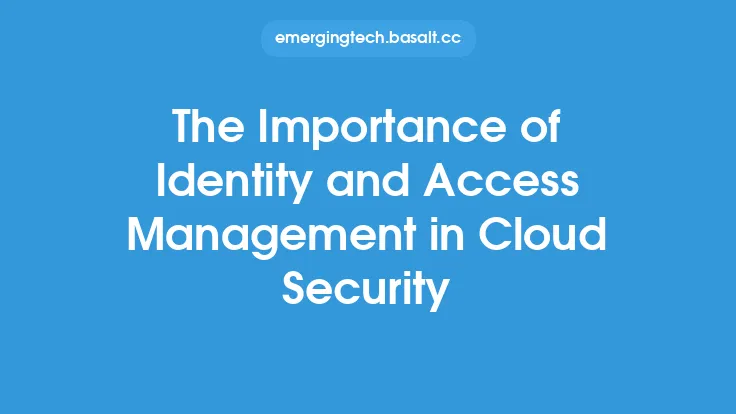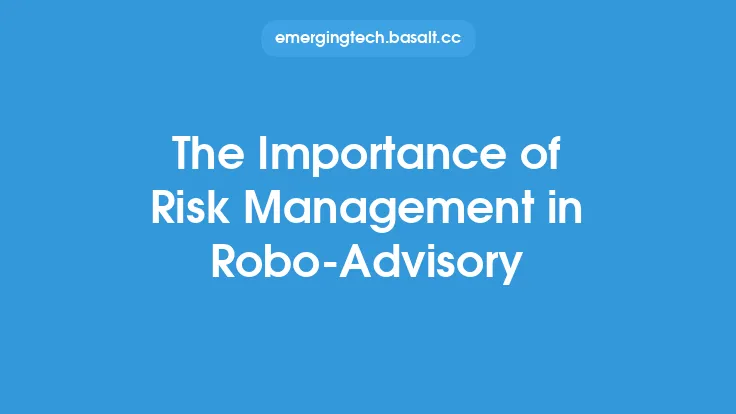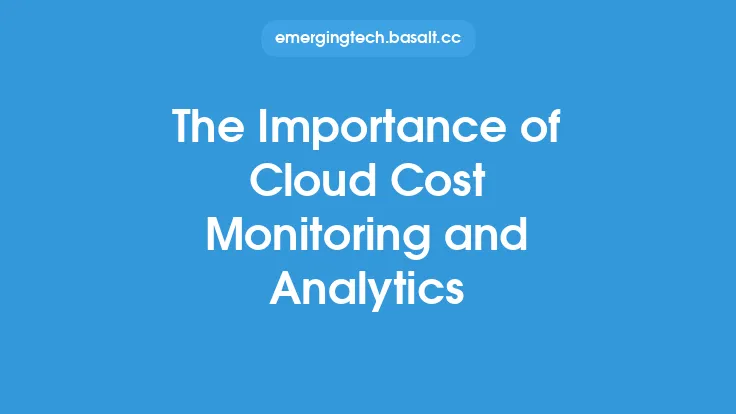As organizations increasingly move their operations to the cloud, the importance of effective risk management in cloud governance cannot be overstated. Cloud computing offers numerous benefits, including scalability, flexibility, and cost savings, but it also introduces new risks and challenges that must be addressed. Risk management is a critical component of cloud governance, as it enables organizations to identify, assess, and mitigate potential risks associated with cloud computing. In this article, we will explore the importance of risk management in cloud governance and provide guidance on how to implement effective risk management strategies.
Introduction to Cloud Risk Management
Cloud risk management is the process of identifying, assessing, and mitigating potential risks associated with cloud computing. It involves evaluating the likelihood and potential impact of various risks, such as data breaches, service disruptions, and compliance violations. Effective cloud risk management requires a comprehensive understanding of the cloud environment, including the cloud service provider's (CSP) security controls, data storage and processing practices, and compliance with relevant regulations and standards. Cloud risk management is an ongoing process that requires continuous monitoring and assessment of potential risks, as well as regular updates to risk management strategies and controls.
Types of Cloud Risks
There are several types of cloud risks that organizations must be aware of, including:
- Security risks: These include data breaches, unauthorized access, and other security threats that can compromise the confidentiality, integrity, and availability of cloud-based data and applications.
- Compliance risks: These include the risk of non-compliance with relevant regulations and standards, such as data protection laws, industry standards, and contractual requirements.
- Operational risks: These include the risk of service disruptions, outages, and other operational failures that can impact the availability and performance of cloud-based services.
- Financial risks: These include the risk of unexpected costs, cost overruns, and other financial losses associated with cloud computing.
- Reputation risks: These include the risk of damage to an organization's reputation and brand, resulting from security breaches, compliance failures, or other cloud-related incidents.
Cloud Risk Management Frameworks
Several cloud risk management frameworks are available to help organizations manage cloud risks, including:
- NIST Cybersecurity Framework: This framework provides a comprehensive approach to managing cybersecurity risks, including those associated with cloud computing.
- ISO 27017: This standard provides guidelines for information security controls in cloud computing, including risk management and compliance.
- COBIT: This framework provides a comprehensive approach to IT governance and management, including cloud risk management.
- Cloud Security Alliance (CSA) Cloud Controls Matrix: This framework provides a comprehensive set of cloud security controls, including risk management and compliance.
Implementing Cloud Risk Management
Implementing effective cloud risk management requires a structured approach, including:
- Risk assessment: Identify and assess potential cloud risks, including security, compliance, operational, financial, and reputation risks.
- Risk mitigation: Implement controls and mitigations to reduce the likelihood and potential impact of identified risks.
- Risk monitoring: Continuously monitor cloud risks and update risk management strategies and controls as needed.
- Risk reporting: Provide regular risk reports to stakeholders, including management, auditors, and regulators.
- Risk governance: Establish clear risk governance policies, procedures, and standards, including roles and responsibilities, risk management frameworks, and compliance requirements.
Cloud Risk Management Tools and Technologies
Several cloud risk management tools and technologies are available to help organizations manage cloud risks, including:
- Cloud security gateways: These tools provide network security and threat protection for cloud-based applications and data.
- Cloud access security brokers (CASBs): These tools provide visibility and control over cloud-based applications and data, including security, compliance, and governance.
- Cloud infrastructure security: These tools provide security and compliance controls for cloud infrastructure, including virtual machines, storage, and networking.
- Cloud risk management platforms: These tools provide comprehensive risk management capabilities, including risk assessment, mitigation, monitoring, and reporting.
Best Practices for Cloud Risk Management
Several best practices can help organizations implement effective cloud risk management, including:
- Develop a comprehensive cloud risk management strategy: Establish clear risk management policies, procedures, and standards, including roles and responsibilities, risk management frameworks, and compliance requirements.
- Conduct regular risk assessments: Identify and assess potential cloud risks, including security, compliance, operational, financial, and reputation risks.
- Implement robust security controls: Implement controls and mitigations to reduce the likelihood and potential impact of identified risks, including network security, threat protection, and data encryption.
- Monitor cloud risks continuously: Continuously monitor cloud risks and update risk management strategies and controls as needed.
- Provide regular risk reports: Provide regular risk reports to stakeholders, including management, auditors, and regulators.
Conclusion
Effective risk management is critical to cloud governance, as it enables organizations to identify, assess, and mitigate potential risks associated with cloud computing. By understanding the types of cloud risks, implementing cloud risk management frameworks, and using cloud risk management tools and technologies, organizations can reduce the likelihood and potential impact of cloud-related risks. By following best practices for cloud risk management, organizations can ensure the security, compliance, and governance of their cloud-based operations, and unlock the full benefits of cloud computing.





